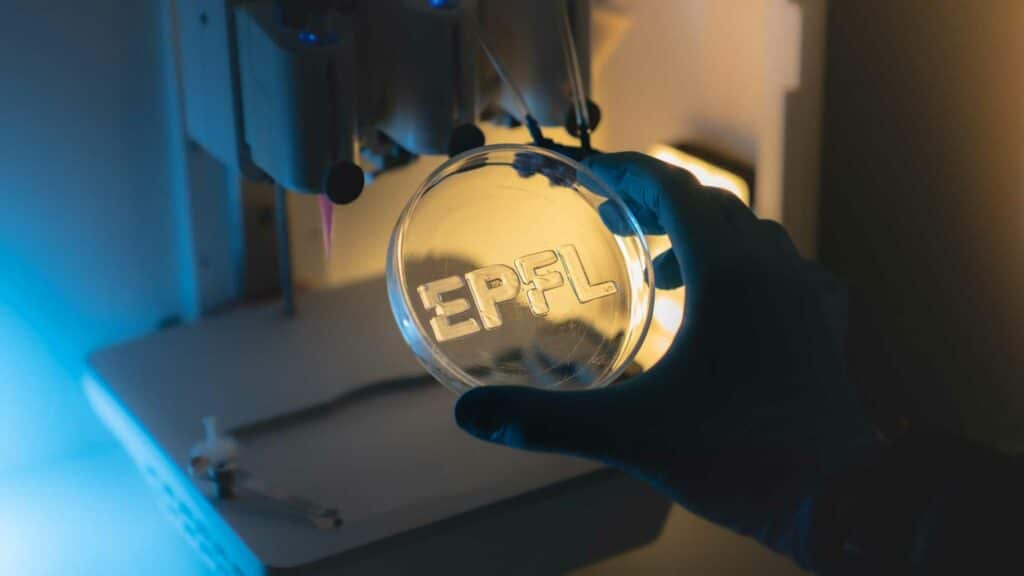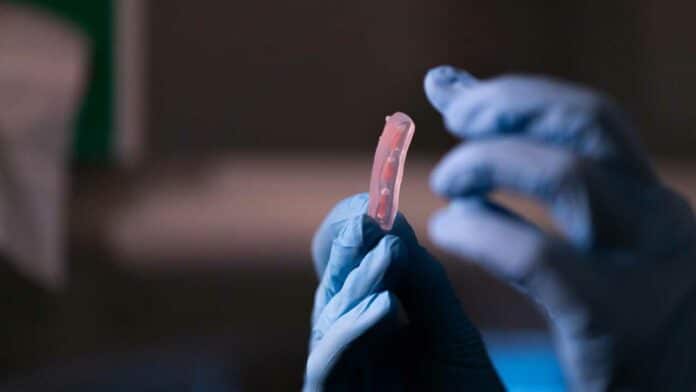A significant problem for engineers working on wearable technology and soft robots is keeping things lightweight. Wearing heavier materials might be uncomfortable since they take more energy to move.
Since they can be stretchable or rigid, elastomers—synthetic polymers with a variety of mechanical properties—are frequently utilized in these kinds of applications. However, it has been challenging to produce elastomers that can be molded into intricate three-dimensional structures with different stiffness levels.
To overcome this difficulty, scientists created DNGEs, or double network granular elastomers, which can be printed in three dimensions and have their mechanical characteristics altered over short distances.

PhD candidate Eva Baur of the Soft Materials Laboratory used DNGEs to print a prototype finger with stiff ‘bones’ encircled by flexible ‘flesh’. This finger serves as an example of how technology may be used to create flexible and comfy devices that can bend and stretch while maintaining enough firmness to manipulate objects.
Because of these benefits, the researchers think that DNGEs could make constructing wearables, sensors, and soft actuators easier without the need for large, cumbersome mechanical joints.
The design of two elastomeric networks is the secret to the DNGEs’ adaptability. First, droplets of oil-in-water emulsion are used to create elastomer microparticles. After being dissolved in a precursor solution, the microparticles absorb elastomer components and swell.
The appropriate structure is then created by loading the 3D printable ink into a bioprinter using the swelling microparticles. The 3D-printed structure’s precursor is polymerized, forming a second elastomeric network that stiffens the thing as a whole.
The first network’s composition defines the structure’s stiffness, while the second network’s composition determines its fracture toughness. As a result, the two networks can be individually adjusted to obtain a combination of fatigue resistance, toughness, and stiffness.
Using elastomers instead of hydrogels, which are utilized in cutting-edge methods, provides the extra benefit of producing water-free structures, which increase their stability over time. Moreover, DNGEs can be produced with commercially available 3D printers.
Esther Amstad, head of the Soft Materials Laboratory in EPFL’s School of Engineering, said, “The beauty of our approach is that anyone with a standard bioprinter can use it.”
The capacity of DNGEs to support movement in one direction while restricting it in another presents a fascinating potential application in motion-guided rehabilitation systems. Further development of DNGE technology could produce prostheses or even motion guides to help surgeons. Another area of application is sensing remote movements, such as in undersea exploration or robot-assisted agriculture harvesting.
Journal Reference:
- E. Baur, B. Tiberghien, E. Amstad, 3D Printing of Double Network Granular Elastomers with Locally Varying Mechanical Properties. Adv. Mater. 2024, 2313189. DOI: 10.1002/adma.202313189
